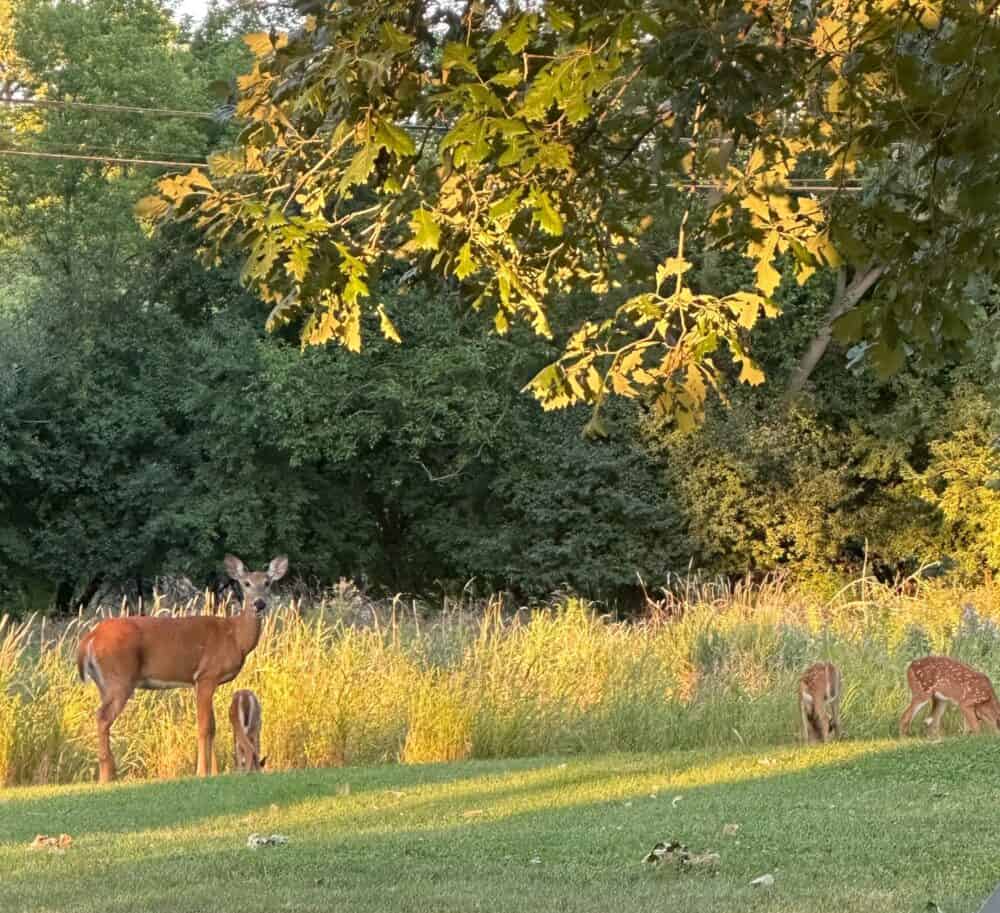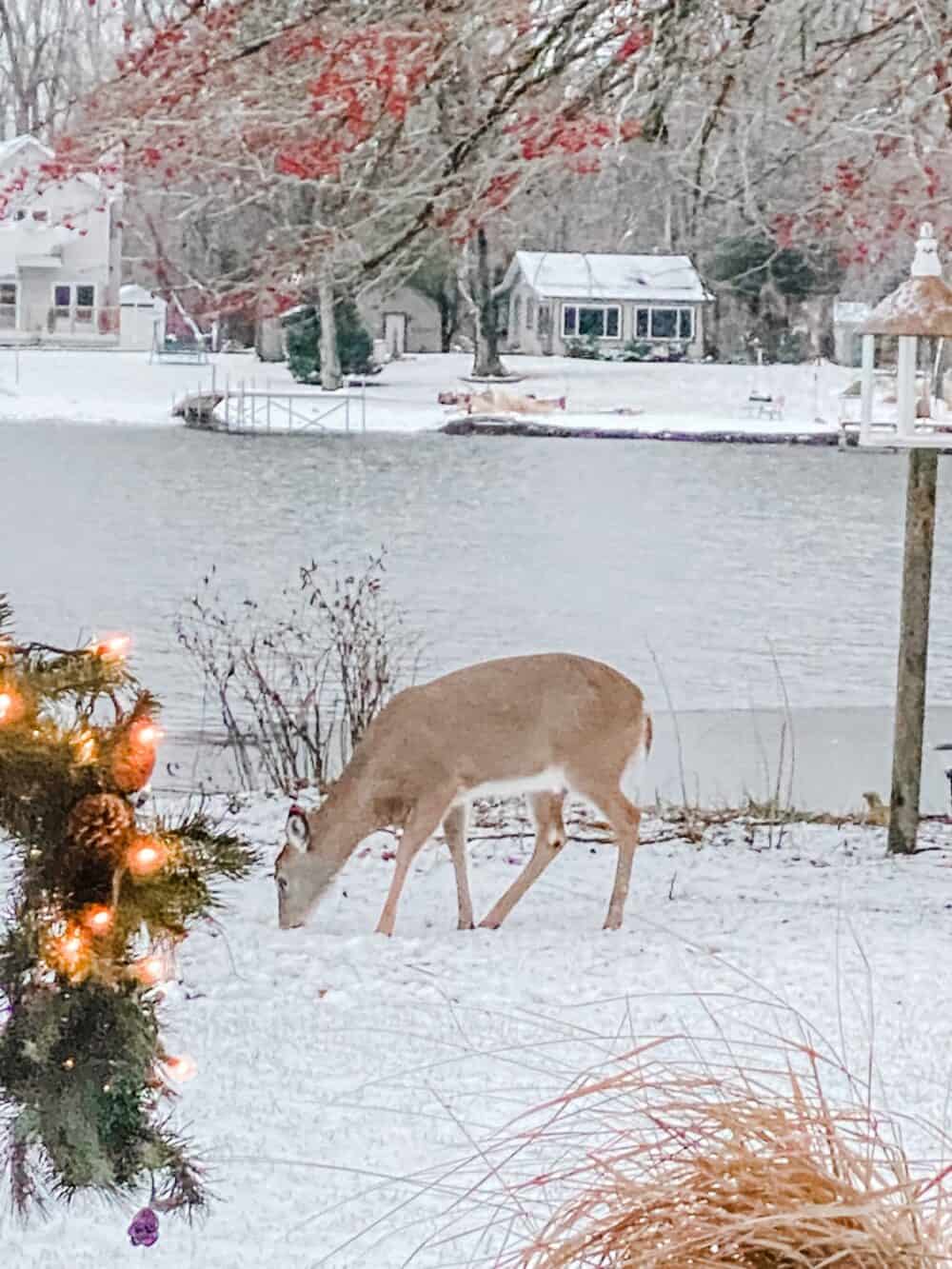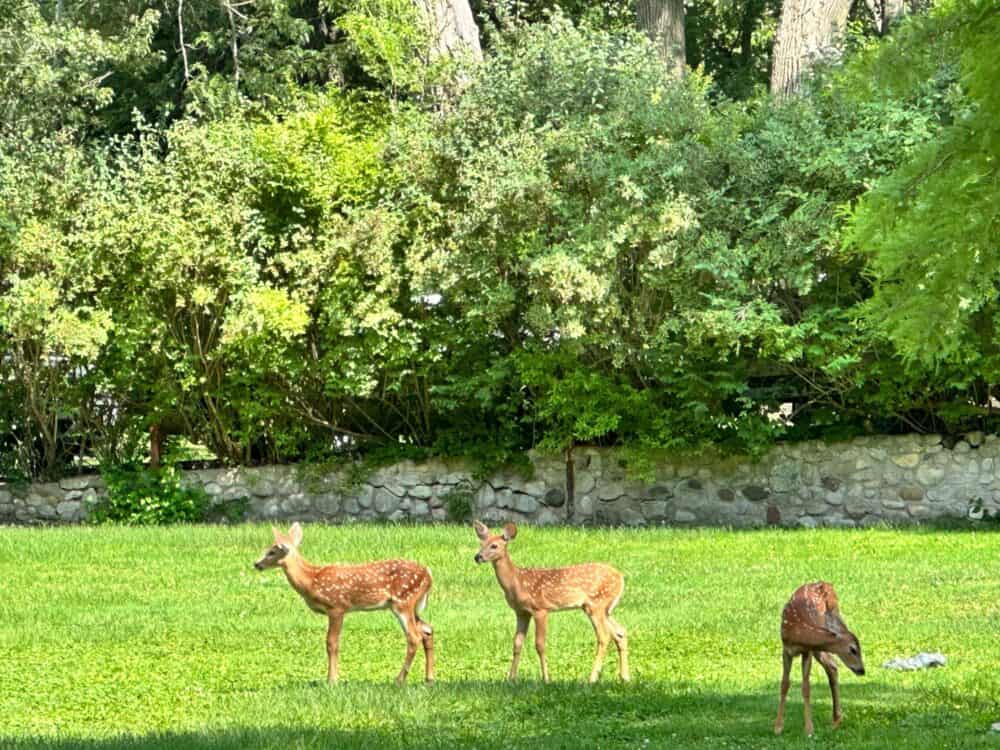Deer can be a real nuisance for gardeners. With their voracious appetites they can decimate a garden in no time especially targeting tender new growth. Baby sage plants are particularly vulnerable to deer due to their aromatic foliage and delicate stems. If deer are a problem in your area, you’ll need to take action to protect your young sage plants. In this comprehensive guide, we’ll explore various effective strategies to safeguard your baby sages from deer damage.
Understanding Why Deer Love Baby Sage
Before diving into solutions, it’s important to understand what makes baby sage so irresistible to deer. Here are some key reasons why they love to munch on young sage plants
-
Tender Foliage: The leaves of baby sage plants are very delicate and tender. Deer love the tender texture.
-
Strong Scent The aromatic oils in sage leaves give them a potent scent that deer can detect from afar They find this smell very enticing,
-
Easy Access: Short baby sage plants are easy for deer to reach and nibble on. More mature sage plants may be out of a deer’s reach.
-
High Nutrition: The leaves of young sage plants contain nutrients like vitamins, minerals and proteins that deer seek out to supplement their diet.
-
Lack of Defenses: Baby sages don’t have woody stems or chemical defenses that more mature plants have to deter deer. This makes them an easy snack.
Knowing what makes baby sage so tantalizing to deer gives you the insight to better protect them. Now let’s explore useful techniques to safeguard your young plants.
Physical Barriers for Protecting Baby Sage
One of the most effective approaches is using physical barriers to block deer access. Here are some options:
-
Fencing: Install an 8-10 foot tall fence around your garden. For maximum protection, use mesh fencing and bury the bottom 1-2 feet underground so deer can’t squeeze under.
-
Cages: Use chicken wire, hardware cloth, or plastic garden cages to surround baby sage plants individually. Use stakes to keep the cages upright.
-
Cloches: Place individual plastic cloches or wire mesh covers over each sage plant when young. Remove them once mature.
-
Scarecrow: Position a lifelike scarecrow near your sage plants. Move it frequently so deer don’t get used to it. Add decorations like aluminum pie pans that will move in the wind and startle deer.
The key is blocking the deer’s access to your baby sage plants. Use a combination of barriers for the best protection.
Natural Repellents to Deter Deer
You can also make your baby sage plants less palatable to deer by using repellents. Natural scent and taste deterrents are safe options:
-
Garlic oil: Mix pure garlic oil with water and spray onto plant leaves. Reapply after rain.
-
Hot pepper spray: Blend hot peppers with water and a bit of soap. Strain out solids and spray the liquid onto plants. Reapply every 1-2 weeks.
-
Soap spray: Use a diluted castile soap spray on plants as a simple repellent. Add a bit of citrus oil for added scent deterrent.
-
Eggs: Mix 1 egg with 1 cup water and spray onto plant leaves. The egg smell deters deer. Reapply after rain.
-
** predator urine:** Apply coyote, wolf, lion or fox urine near plants. The scent mimics predator presence which frightens deer. Reapply every 2 weeks.
Test different natural repellents to find what works best to deter deer in your area. Persistence is key for effectiveness.
Smart Companion Planting
By strategically planting specific companion plants near your baby sage, you can help disguise and protect your sages in a natural way:
-
Plant aromatic herbs like lavender, thyme, oregano and dill around your sage. Their strong scent masks the sage smell that attracts deer.
-
Use prickly plants like roses, blackberry brambles or yucca around the garden perimeter to block deer access.
-
Plant flowers like marigolds, cosmos and zinnias near your sage. Their scent helps confuse deer.
-
Grow vegetables that deer dislike, like onions, peppers and eggplant, alongside your sage as a deterrent.
Choose companion plants wisely to create a diverse habitat that benefits your baby sage.
Motion-Activated Deterrents
Devices that detect motion and emit noises or water to startle deer can provide added protection:
-
Position motion-activated sprinklers that spray water when deer are detected. The sudden spray will deter them.
-
Use ultrasonic noise emitters triggered by movement. Random loud sounds will scare deer away.
-
Set up lights triggered by motion sensors. Flashing lights often disturb deer at night.
Use deterrent devices judiciously. Avoid excessive watering of your plants and don’t allow sounds to become a nuisance to neighbors.
Monitoring and Adaptive Management
Diligent observation and adapting your defenses over time is key for effective protection:
-
Routinely check your garden for signs of damage or deer activity. Look for tracks, droppings, nibbled leaves or rub marks on plants.
-
Observe when deer tend to be most active and target your defenses accordingly. Dusk, dawn and nighttime are typical deer feeding times.
-
If one deterrent stops working, switch to another. Deer can adapt so you need to keep them guessing.
-
As plants grow, expand cages and barriers to accommodate size. A snug fit will prevent deer from squeezing in.
-
Remove flower heads on companion plants before they go to seed so they don’t attract deer.
Stay vigilant and don’t become complacent. Evolve your safeguards as needed. Protecting baby sage from deer takes commitment!
Key Plants That Deter Deer
Incorporating specific plants that naturally repel deer in and around your garden can augment your defenses:
Plants with Coarse Textures
Deer dislike the rough, abrasive feel of these plants. Use them as barrier plants:
-
Ornamental grasses like switch grass, maiden grass and fountain grass
-
Spiky yucca
-
Prickly blackberry and raspberry canes
-
Sharp, leathery agave leaves
-
Rough ferns like ostrich fern
Plants with Strong Scents
The potent smell of these plants deter deer. Interplant them around your garden:
-
Lavender
-
Catmint
-
Sage
-
Thyme
-
Oregano
-
Marigolds
-
Garlic
-
Chives
-
Daffodils
Toxic Plants
Deer tend to avoid plants poisonous to them. Use these sparingly if you have pets or kids:
-
Foxglove
-
Poppies
-
Morning glories
-
Sweet pea
-
Iris
-
Hyacinth
There are no foolproof deer repellents but combining multiple deterrent strategies gives your vulnerable baby sage plants a fighting chance. With persistence and vigilance, you can enjoy your garden without it being ravaged by deer. Don’t become discouraged, get creative and remain adaptable in your defensive efforts. Protecting our gardens is simply part of coexisting with nature. With commitment and passion, we can cultivate beauty while living in harmony with these graceful creatures.

Deer Habitats and Feeding Patterns
Deer, like the white-tailed deer I often see around, aren’t just meandering aimlessly; they’re on a quest for food, and they’re often hungry, very hungry. Biologists have a modest estimate that deer consume around 6 to 8 pounds of food a day. Honestly, watching them, it feels like more. Their habitats are typically edged areas where the forest meets an open space. Think of it as their perfect dining room because it offers them a variety of food sources.

In my case, our family of deer lives in a forested area on our cul-de-sac that is surrounded by water. We have a whole family and each year we have new fawns who need to eat to grow big and strong enough to find their habitat. This past year we had a Doe with four fawns and for the first time, the Dad (the buck) stuck around for the whole summer.
These avid climbers and jumpers trek across their home ranges, which can be quite extensive, searching for their next meal. They have a strong sense of smell that guides them to the yummiest and most nutritious snacks, like the tulips I had planted last spring—a big mistake on my part. This year I’ve planted them in my vegetable garden. Fingers crossed they will be ok in that fence area.
Now, about keeping deer out of our gardens: it seems my ornamentals and vegetable patch were like an all-you-can-eat buffet. Deer are attracted to an array of plants—herbaceous perennials, vegetables, and fruit trees are their favorites. Their palate can occasionally change based on what’s available, so rotating repellents is key.
Deer doesn’t love all scents and tastes, though. Some homemade repellents work by targeting their sensitive noses and tastebuds. For instance, a funky mix of eggs and baking powder in water—I know, it sounds like a bad recipe—can actually discourage them from chomping on plants. It’s about striking a balance between what’s appealing and what’s off-putting to them.

When trying to keep deer out of my garden, I’ve realized it’s all about making my green space less appealing to them. Here are some different methods that have worked for me:

Repellent Sprays and Solutions
Deer love young plants and the tender new buds on plants. You have to start your deterrents early, at the first sign of emerging plants.
I start the season by spraying the entire perimeter of our yard with Liquid Fence. I started last week as my Hellebore is flowering already and the deer had started to nibble so it’s time to strike with the repellent sprays. The first application of the Invisible Fence is followed one week later by another round of spraying. Then it will be something that I do once a month.
I have had great success with deer off spray which uses a combination of ingredients like rotten eggs and essential oils to deter deer. It’s a non-toxic option that needs reapplication after rain. Plantskydd Animal Repellent Spray is a new spray for me but it’s working really well.. It clings well to plants and its main component, blood meal, is a great deterrent.
The combination of the effective deer repellents sprayed around the yard makes my plants as unappealing as possible.

Talking about smells, deer have sensitive noses and I leverage that to my advantage. I use hot pepper sprays around my plants; the fiery scent keeps them at bay. Sometimes, I’ll strategically place ammonia-soaked rags around the garden’s perimeter. Oddly enough, hanging bars of soap, specifically Irish spring soap from trees also seem to mess with their sense of smell and keep them out.
I have also heard that human hair works but it hasn’t worked for me. It could be the fact that I don’t have easy access to human hair. Maybe if you know a salon owner, you could give it a decent try.
I’ve tried using predator urine near my garden’s entry points. Coyote urine works the best for me. The scent gives deer the impression that predators are nearby and the fear of danger is often enough to keep them away.
How to Protect Trees from Deer
FAQ
Is baby sage deer resistant?
Will deer eat sage plants?
What smell do deer absolutely hate?
How do you keep deer from grazing a tree?
Erecting a fence around the newly planted trees can be an effective deterrent. The fence should be tall enough to prevent deer from jumping over, typically at least 8 feet in height. For individual trees or small plantings, tree protectors such as mesh or wire cages can be used.
Do tree guards protect saplings from deer damage?
Proactive protection is, therefore, crucial for the healthy growth of saplings. Tree guards and tree shelters can be invaluable in safeguarding saplings from deer damage. These physical barriers provide a shield against browsing and rubbing. Correct installation is critical to ensure they are both effective and do not impede the growth of the tree.
How do you protect trees from deer?
Protecting newly planted trees from deer with repellents may use the animal’s sense of smell or taste to drive it away. Homemade remedies abound on the internet or try a commercial repellent for tree protection against deer. Actually, you don’t even need to touch a saucepan. Deer are offended by human scents such as bars of soap and hair.
Do you need a deer tree protection?
Watching wildlife is a peaceful and sentient activity. Deer are especially marvelous to view in the woods and fields but once they are in your garden, the gloves come off. Deer tree protection is necessary for many varieties of trees, as well as the newly planted babies up to a few years old.
